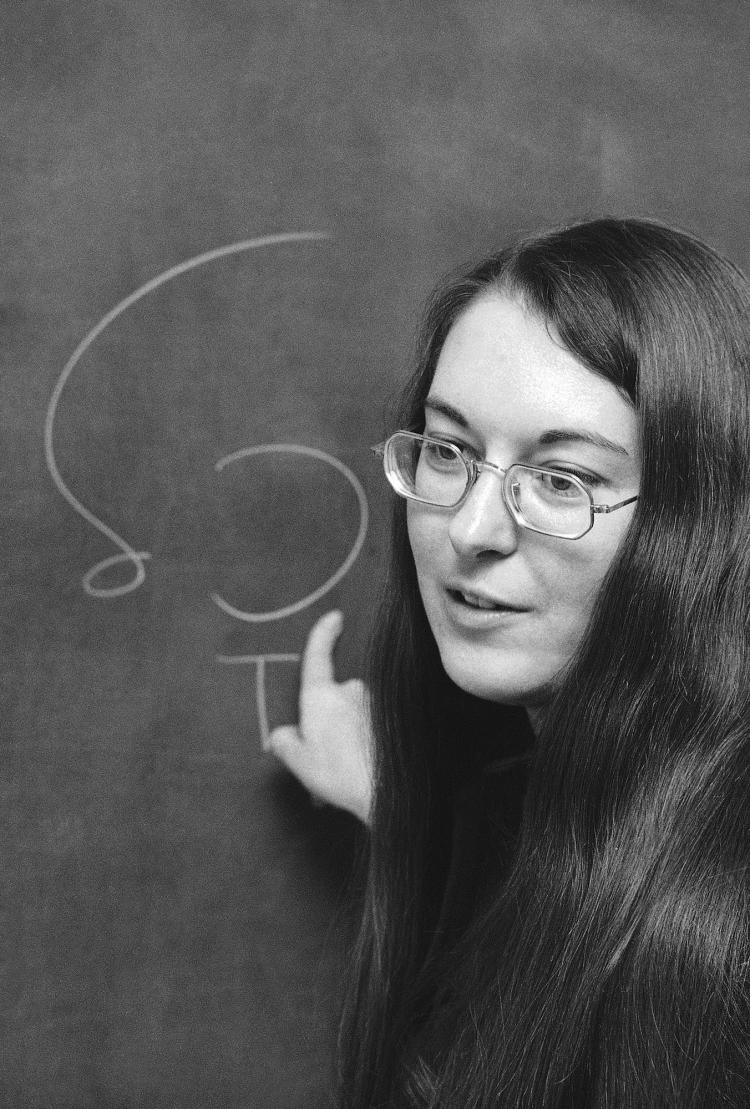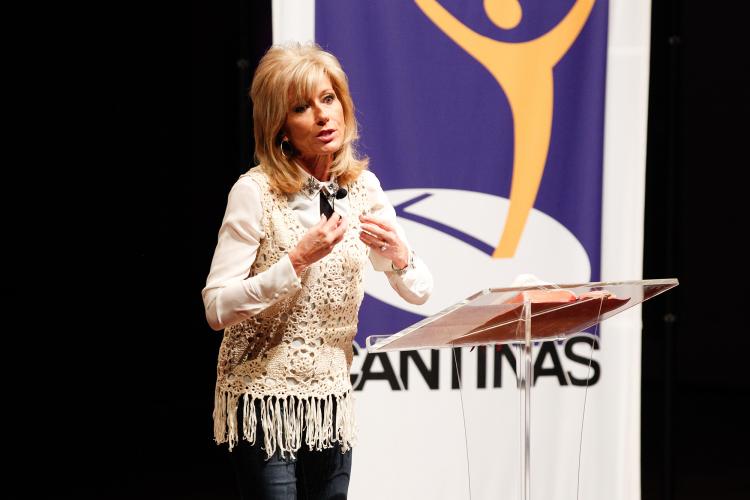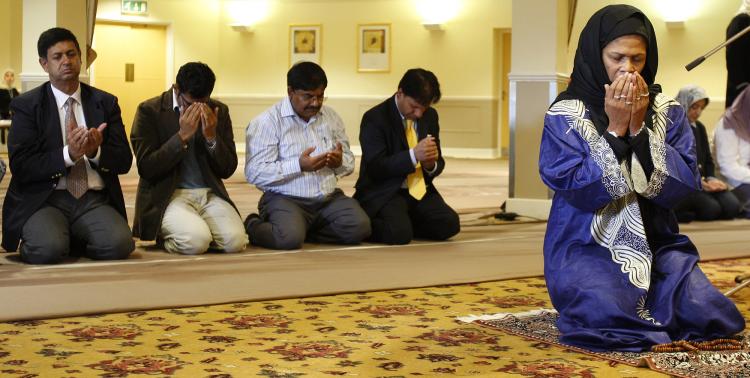Women lead religious groups in many ways—besides the growing number who have been ordained
What constitutes women’s leadership in religious communities is open to many interpretations. In the U.S., more attention has been given to women’s ordination because of the highly public and visible nature of these roles, but the issue is far more complicated.
In her 2010 book “Breaking Through the Stained Glass Ceiling: Women Religious Leaders in Their Own Words,” radio host Maureen Fiedler identifies at least eight types of religious leadership roles for women: denominational and organizational leaders, biblical scholars, theologians, religious activists, spiritual teachers, interfaith leaders and journalists. While each has its own particular challenges and struggles, Fiedler notes that “denominational leadership is hardest for women to achieve, because it involves real power.”
As a scholar of gender and U.S. religious history, I argue that while attention to women’s ordination is important, it does not tell the whole story of women’s leadership.
Vibrant traditions
Though women have not always had the same rights and privileges as men, there are also long and vibrant traditions of women’s leadership in the world’s religions.

At the top of the page: Rabbi Diana Villa, center, with colleagues at the Schechter Institute of Jewish Studies, in Jerusalem, in 2013 (AP Photo/Sebastian Scheiner).Above: Sally J. Priesand, the first female rabbi, speaks in New York, on March 5, 1974 (AP Photo/Marty Lederhandler).
Women have been nuns, teachers, priestesses, gurus, heads of religious orders, deacons and elders. In the U.S., Jarena Lee became the first woman authorized to preach in the African Methodist Episcopal Church, in 1819. In 1854, Antoinette Brown Blackwell was ordained by a local Congregationalist church in New York, becoming the first U.S. woman to receive full ordination as a minister.
But women’s ordination was not widespread in the U.S. until the 1950s, when some Protestant Christian denominations began to offer formal ordination and full clergy rights to women, beginning with the United Methodist Church (UMC) and what would become the Presbyterian Church USA in 1956. These changes sprang from the desire to formalize local and smaller-scale practices of women’s leadership as well as to respond to larger cultural changes such as the second-wave feminist movement.
Some feminists rejected all religious institutions, and religion more generally, as inherently patriarchal. Others left their own communities to create entirely new women-centered forms of religion. But many preferred to remain and work within their traditions to make them more inclusive, looking to history, tradition and sacred texts for resources. Women’s ordination is only one piece of this ongoing work.
Ordaining women
In the 1970s, more Protestant denominations, such as the Evangelical Lutheran Church in America and the Episcopal Church, voted to ordain women. In 1980, Marjorie Mathews became the first female bishop in the UMC and the first U.S. woman to hold the position of bishop in any major Christian denomination. In 1989, Barbara Harris became the first female and first African American female bishop in the Episcopal Church.
Today there are more women, women of color and LGBTQ priests and bishops in U.S. Protestantism than ever before.
There have been equally dramatic changes in American Judaism since 1972, when Sally Priesand became the first U.S. female rabbi, ordained by a Reform Jewish rabbinical seminary. The Reconstructionist and Conservative traditions followed, ordaining women as rabbis in 1974 and 1985, respectively.
Since that time, at least 700 women have been ordained as Reform rabbis and at least half of all rabbinical students at liberal Jewish seminaries are female. The American Jewish rabbinate is more diverse than ever, not just with respect to gender but also racial and ethnic diversity as well as LGBTQ identity.
Opposition to change
But women’s ordination remains largely off limits in many other traditions, including the two largest U.S. Christian denominations—the Roman Catholic Church and the Southern Baptist Convention, or SBC—as well as the Church of Jesus Christ of Latter-day Saints, known as the LDS, and Orthodox Judaism.
In 2014, Kate Kelly, founder and leader of a movement to ordain women to the LDS priesthood, was excommunicated by the LDS Church. In 2000, the SBC attempted to settle decades of debate on women’s ordination by issuing a statement that “the office of pastor is limited to men as qualified by Scripture.” Despite this, because of the decentralized nature of Baptist polity, individual churches can, and still do, occasionally ordain women even though they risk being ostracized from the denomination for doing so.
While some continue to advocate for women’s ordination within the SBC, others, such as popular Bible study teacher Beth Moore, have made the painful decision to leave to pursue their leadership vocations in less restrictive communities.
Orthodox Judaism also remains officially opposed to women’s ordination, although beginning in 2009, a small number of women have received rabbinical training and ordination through Yeshivat Maravat, a New York City-based Modern Orthodox seminary. Most have chosen to call themselves by titles other than “rabbi.”
In response, the Rabbinical Council of America, one of the world’s largest associations of Orthodox rabbis, passed several resolutions condemning the ordination of women, including a 2015 statement declaring that “RCA members with positions in Orthodox institutions may not ordain women into the Orthodox rabbinate, regardless of the title used.”

Evangelist and author Beth Moore (Terry Wyatt/Getty Images for Dove Awards).
But in 2016, Yeshiva Maharat graduate Lila Kagedan made history by becoming the first woman to take the title “Rabbi.” She currently serves a congregation in New Jersey.
Roman Catholics
Earlier this year Pope Francis issued a decree formally allowing women to serve as lectors and acolytes in the Roman Catholic Church, roles that many women around the world have informally had for some time. Yet he simultaneously distinguished these lay ministerial roles from the “ordained” ministries of the priesthood and diaconate, which remain male-only.
When asked in 2016 whether women would ever be ordained as priests, Francis referenced Pope John Paul II’s 1994 apostolic letter definitively denying the possibility of women priests and remarked that “on the ordination of women in the Catholic Church, the last word is clear.”
Yet many Roman Catholic women remain undeterred and continue their decadeslong struggle for women’s ordination. Since 2002, the controversial organization Roman Catholic Women Priests has ordained around 200 “womenpriests”—and some men—into what they term “renewed priestly ministry,” many of them serving communities in the U.S.
Thinking beyond ordination
Women’s ordination has contributed to significant changes in U.S. religious communities, in many cases opening pathways to ordination for LGBTQ and other marginalized groups and leading to greater diversity within their traditions as well as higher levels of participation and commitment among women parishioners.
But others have criticized the focus on ordination as too limited. Instead of simply being incorporated into male-dominated institutions, they argue that women should work to transform them.
The focus on ordination also obscures the many less visible forms of women’s leadership in religious communities. Further, it may reflect limited understandings of individual freedom and the nature of religious authority.

Professor Amina Wadud leading a Friday prayer service in Oxford, England, in 2008 (AP Photo/Kirsty Wigglesworth).
For example, within the U.S. Muslim community, scholar Amina Wadud made headlines in 2005 when she led mixed-gender congregational prayers at a highly publicized event in New York City, with some calling her the first American female imam.
Wadud and other Muslim women have continued to lead prayers in their communities. But Muslim women’s leadership may also be measured by increased representation of women on mosque boards of trustees and the establishment of more women-led spaces, such as the Women’s Mosque of America, the first women-led Muslim house of worship in the U.S., founded in 2015.
Other forms of discrimination
There is also an important practical difference between ordaining women and having women in top leadership roles.
For example, 71.8% of U.S. congregations surveyed say they allow women to preach or lead services. But the 2018-2019 National Congregations Study, which surveyed 5,300 U.S. religious communities including Christian, Jewish, Muslim, Buddhist, Hindu and other religious groups, found that only 56.4% of these communities would allow a woman to “be head clergyperson or primary religious leader.” It also found that only 13.8% of congregations are actually led or co-led by a woman, and only 8.1% of U.S. adherents belong to communities that are led or co-led by women – both figures representing increases of just 3% since 1998.
Even after decades of women’s ordination in major U.S. religious organizations, very few women have served in top leadership roles.
The phrase “stained glass ceiling” has been used to describe “the limitations encountered by women in religious leadership roles.” Although much progress has been made, more subtle forms of discrimination and limitations on women’s opportunities for advancement persist. The gender pay gap among clergy is far worse than the national average.
Although some women have been successful in breaking through the stained glass ceiling, the struggle for more inclusive and just religious communities continues.
This article is republished from The Conversation under a Creative Commons license. Read the original article.

